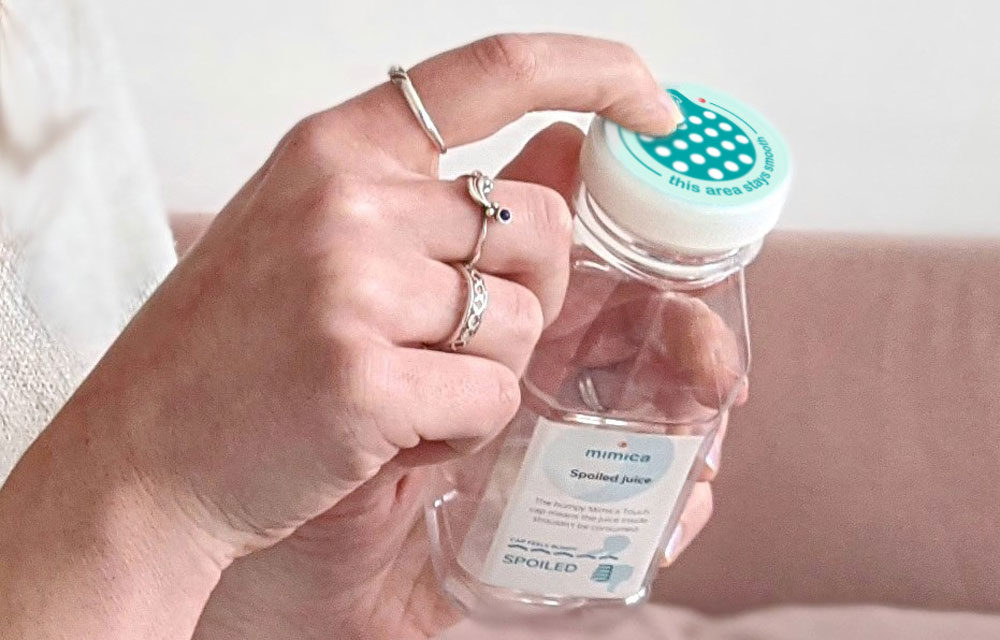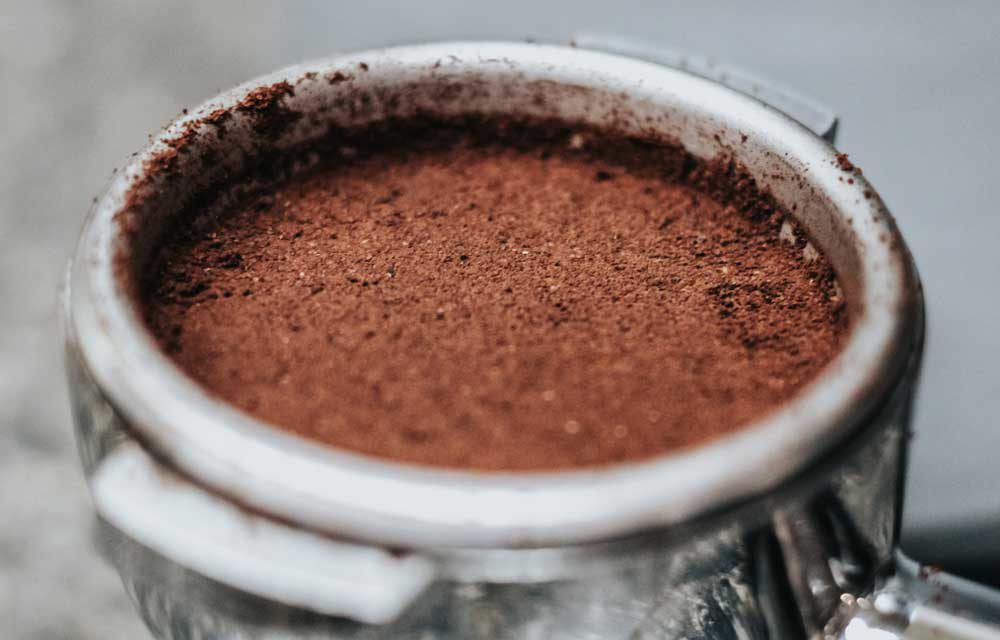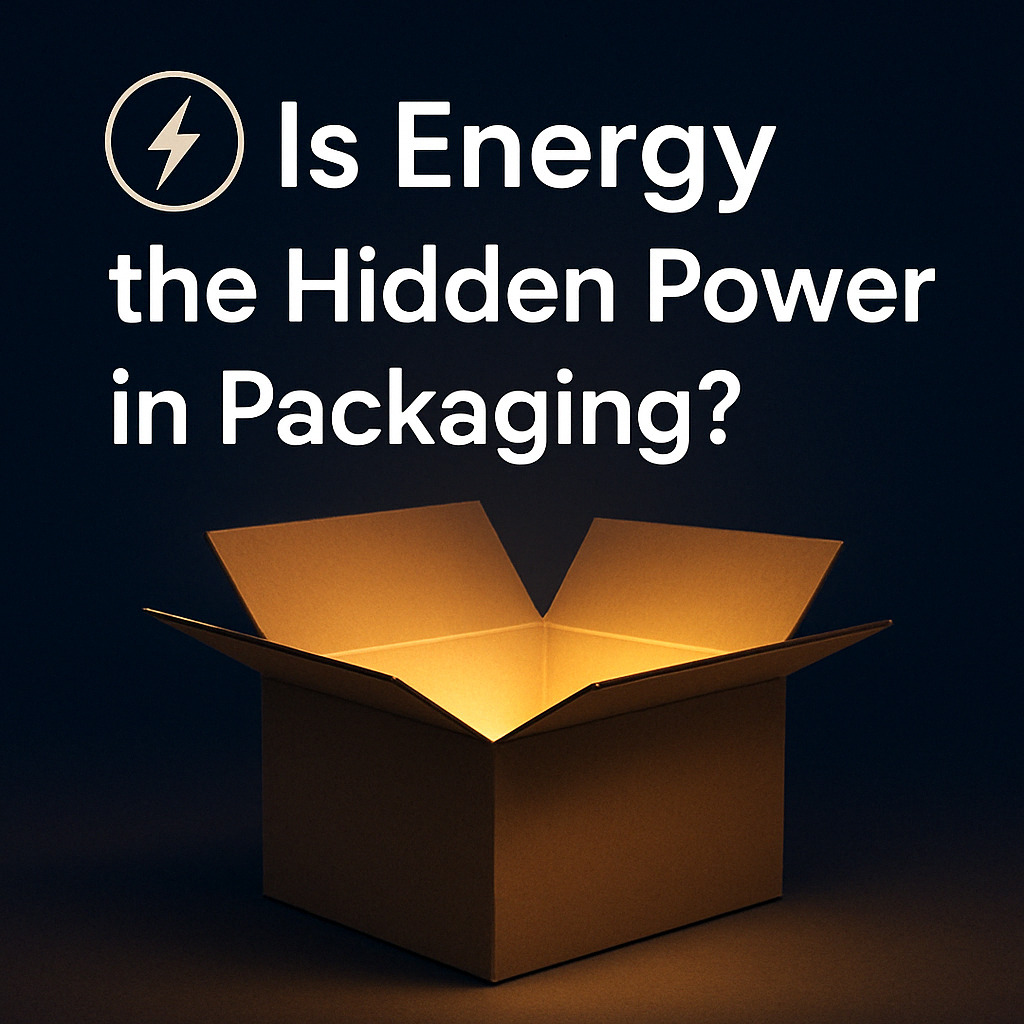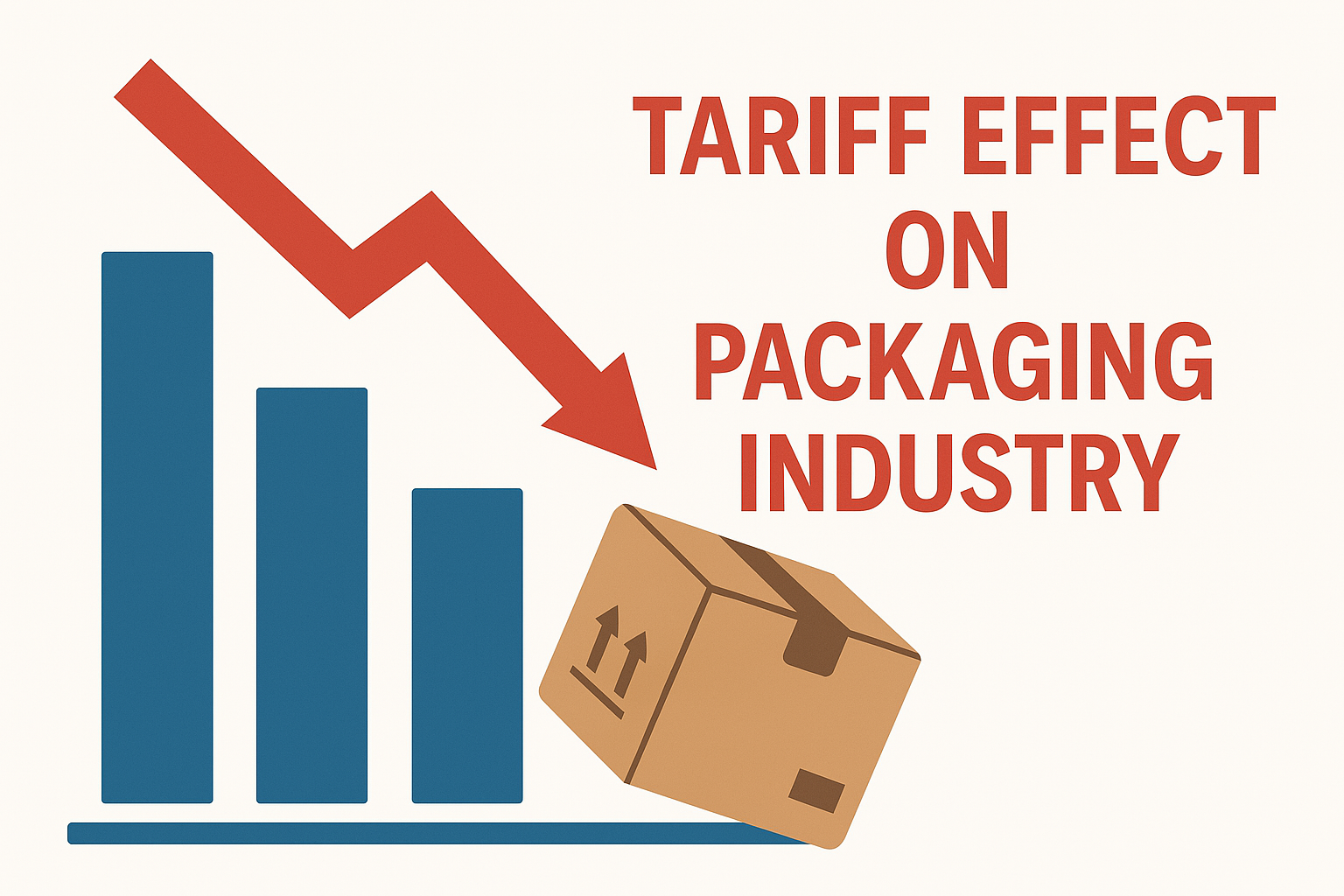

SAVE FOOD members at Interpack:
A CLOSURE FIGHTING FOOD WASTE with London-based start-up Mimica.
Its founder, Solveiga Pakštaitė, primarily wanted to develop a bottle cap that would give people with impaired vision information about the shelf life of the product. As a rule, such info is only printed on the packaging and thus cannot be recognised by visually impaired people.
Pakštaitė's solution: A cap that tells you by its surface texture alone whether the content still has some shelf-life left. When the product goes off, tactile nubs will form on the cap. Not only does this new development enable visually impaired people to feel whether the packaged product has not expired, but it also gives all consumers the certainty that the product is still fit for consumption – even if the printed best-before date has already passed. An invention originally intended "only" for a small section of the population has thus become a packaging solution that is effective across the board.
But how does the cap work? Even if a lot of brainpower is behind the development, the actual solution is relatively simple. After extensive testing and experimentation, Pakštaitė managed to calibrate a gel that never comes into contact with the product, but allows a special label to change from smooth to uneven depending on storage conditions and food profile.
PLASTIC WRAP FROM COFFEE GROUNDS
Biobased waste from communities or restaurants accumulates in large quantities, and can be a source for other biobased products and high quality secondary raw materials. A project called WaysTUP! is dedicated to just these materials and their possible further usage.
One of the first results is a biobased plastic wrap made from coffee grounds. Coffee is a popular beverage in Germany, too: In 2022, the turnover rate for coffee was 4.77 kilograms per capita. In the UK, with 2.8 kilograms per capita the consumption is less, but the British love for coffee is nevertheless great and produces large amounts of organic waste in form of coffee grounds.
Couldn’t we keep this organic waste in circulation and continue to use it further? This is the central question asked by WaysTUP! A project not only for coffee grounds, but for other types of waste. All in all, the goal is to increase awareness in the communities for possibly reusable materials and circulation. Long term, the projects are supposed to find new use possibilities and then establish systems for collection.
A total of 26 research centres, local authorities, companies and city networks participate in the project and are looking for solutions for different materials. One product now turned coffee grounds into raw material for plastic wrap.
The coffee grounds are collected from restaurants in the UK by Bio-Bean, the world’s largest coffee waste recycler. This biobased waste is then processed by the Spanish centre for plastic technology Aimplas and turned into biobased plastic wrap.
The goal of the WaysTUP! project is to find new value creation chains for urban organic waste. To achieve this, the coffee grounds are not only used to gain polymers for making plastic wrap, but also for coffee oil.
"WaysTUP! is a clear example of how organic waste can play an important role in the transformation to a circular economy, by tapping its potential to become a source for high value secondary resources. In our case, we are turning coffee waste into plastic wrap for packaging." -Nuria López, Project Manager at AIMPLAS
The project by Aimplas creates a PHA (polyhydroxylalkanoate) biopolymer that can be further processed using extrusion. This way it is possible to produce a biobased plastic wrap which is suitable for different kinds of flexible packaging. PHAs are also biodegradable.
Since 2019, the plastic technology centre has been a part of WaysTUP! and is working on using coffee grounds as packaging material.







